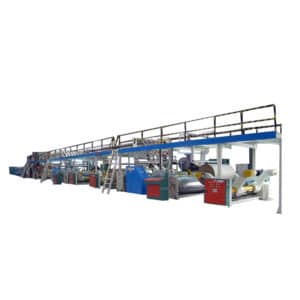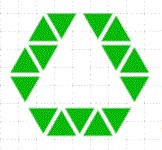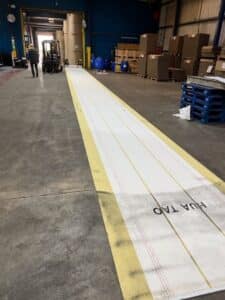First, we should take into consideration that not all corrugators are built in the same manner or for the same range of production materials. But many contain the same basic machines to do each individual part of the process. Here you can see from the picture that many of the wet end machine units of the corrugator are in place under the bridge conveyor system to make effective use of the space at this end of a modern corrugator.
Overhead Bridge Conveyor System

We can have small pocket type corrugators that may only be about 25 to 30 metres total length, with all the main machine parts fitted into this space.
They are usually built for a given type of customer, to produce a particular range of products or may, in fact, be built for one type of product only.
Then, on the other hand, we can have much larger corrugators that around one hundred meters long…!
These would in most cases cover a wide range of materials to produce a wide variety of end-products. Because of the capital costs involved to build & run one of these corrugators, they usually run 24/7/365 if possible…?
Computers & Intelligent Sensors
The length of the bridge conveyor on modern high-speed corrugators makes skillful use of sensors that interact with the central control computer. This means that the operators spend less time looking after this part of the corrugator. Over the last few years, this industry as gone through a massive change in the use of computers and intelligent sensors, which has meant less manpower is required to be involved in running these machines.
Dependent on the production, product, and experience of the operators some of these corrugators are run by 3 to 5 men, whereas in the past 15 to 20 years, it would be nearer 7 to 10 men on a comparable size machine…!
Belt materials Used in Bridge Conveyors
The belt materials that are used for bridge conveyors are made in many different countries around the world. Some companies like to manufacture belts from natural organic materials, like cotton or hemp. While other manufactures use only man-made fibres for their conveyor belt products. Many factors are considered for a corrugator manufacture to decides on the belts he will use on his machines. Speed, length, and width of the corrugator are the top points looked at. Other manufactures will produce a belt to a customer’s requirements and use a combination of products that give the belt long live and durable finishes to last a long time on the corrugator.
Double Backer Conveyor Belt before fitting.
With productivity & average running speeds ever-increasing, this has now put huge pressure on the engineering departments to be pro-active and make use of the latest remote monitoring tools and computer techniques to keep these machines running in peak conditions.
These machines range from 1.4 metres to 2.5 metres wide in the range of machines that we supply & work with.
The speed of these machines’ ranges from sixty to over 450 metres per minute, they are built to run with 2 plies to 7 plies or “layers” of cardboard in one sandwich of corrugated cardboard.
All Corrugators Should Run Like This
The numbers of plies used are determined by the customer’s order requirements. To run these machines efficiently, several orders may be run together so that the full width of the corrugator is utilised for maximum productivity.
flute rollers for single facer

